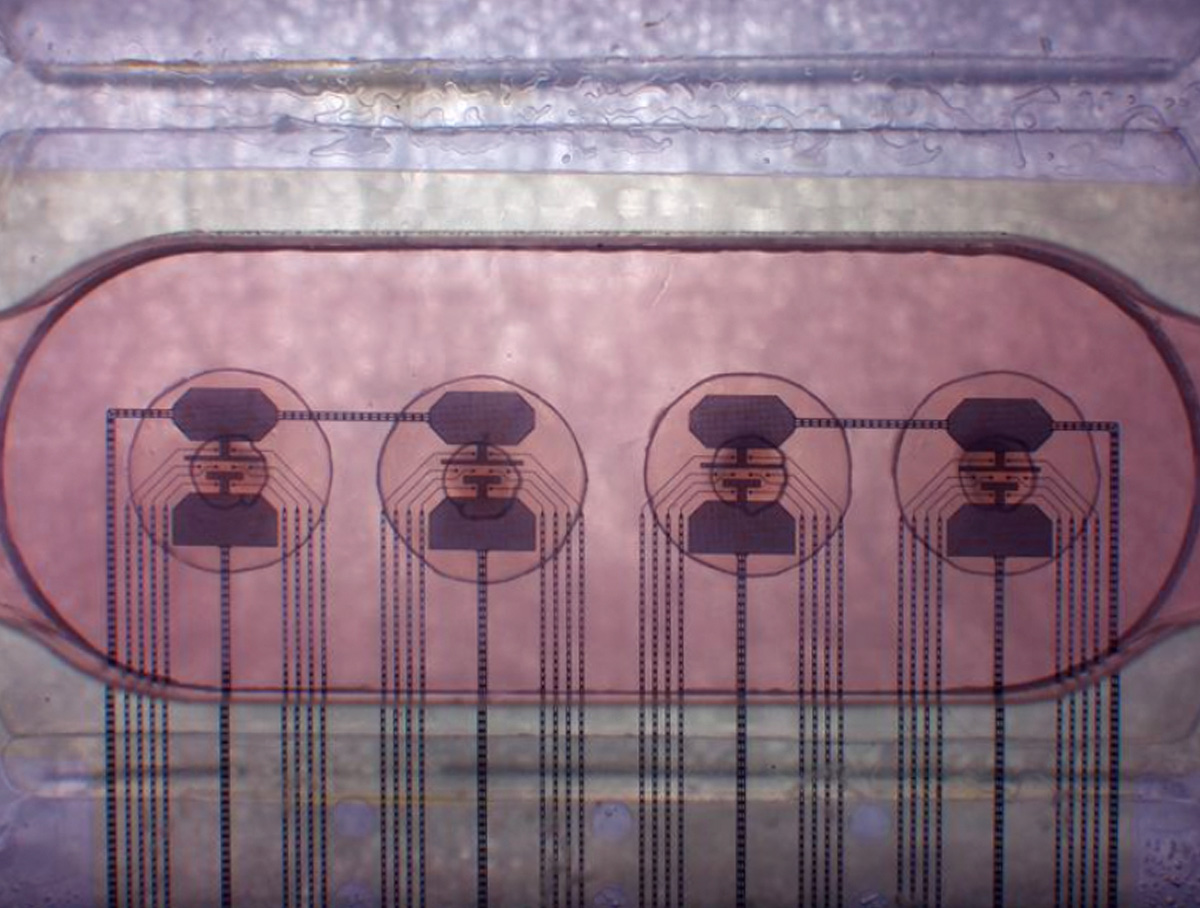After an intensive year of relentless research, we are thrilled to announce that FinalSpark’s Biological Neuroplatform BNP has advanced to the production stage, pushing the boundaries of what we thought possible in neurophysiology.
Milestones Achieved: Unveiling the Potential
The progress is incredibly encouraging. Among our many milestones, we have successfully streamlined the entire experimental process, allowing us to achieve results. We’ve achieved reliable neurosphere production and preservation in our lab, with thousands at our disposal. In conjunction, the incorporation of reliable microfluidics enables us to conduct measurements for months on end, all while maintaining impeccable control over life-critical parameters such as temperature, CO2, O2, N2, humidity, pH, gas bubbles, medium flows, and medium levels.
And that’s not all – Our Integrated Python scripting now enables seamless reading of neuron signals and neuron stimulations, allowing us to navigate the complex neural landscape.
What’s more, experiment documentation has evolved into a smooth and comprehensive process, enabling us to trace back the entire history of any neurosphere, starting from the very moment of thawing, for every stimulation experiment.
Journeying into the Experiment
The Biological Neuroplatform allows us to collect large amounts of neurophysiological in vitro data in an efficient manner. This is all performed under controlled and repeatable conditions. Each experiment begins with the placement of the neurosphere on the electrodes of multielectrode array (MEA). The neurosphere is gently stimulated using an intricate computer system that meticulously reads electrophysiological signals, essentially interpreting the language of the neurosphere.
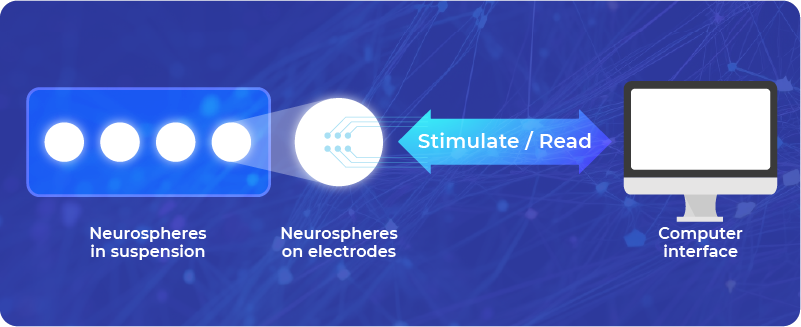
After placing the neurosphere on the MEA, we carefully maintain the environmental conditions (microfluidics, temperature, CO2, etc) to keep the neurosphere alive for several weeks or months. We’ve conducted over 170 experiments so far.
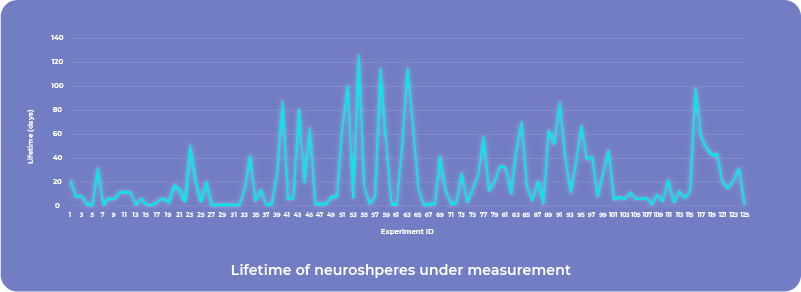
The Data: Interpreted Neurophysiology
Our experiments come alive with thousands of stimulations and readings, each contributing to a range of data. All data is continuously recorded 24/7. We are the only organization in the world that provides live electrophysiological measurement data on the web in real-time. You can see the live feed from each of our experiments here.
The aim of our study is to find ways to modify the network’s behavior so that it produces the expected output for given inputs (it is actually the exact same purpose as for deep learning, except that we do not have direct access to connection weights). To achieve this goal, we employ new algorithms to determine where and when to perform electrical stimulations. The algorithms are fundamentally based on machine-learning approaches and, by nature, require a lot of data. Our neurophysiological data increased by approximately 7 Terabytes from March 2022 to January 2023, as shown in the graph below.
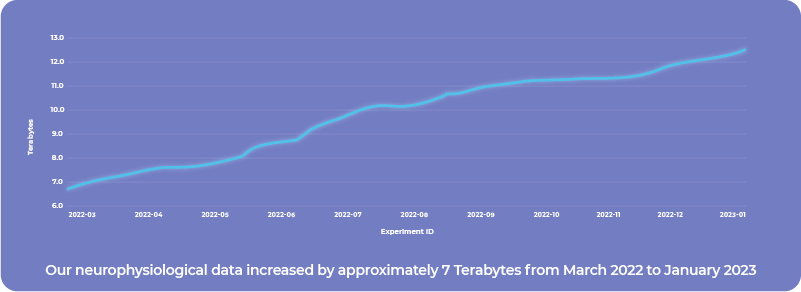
Unveiling the “Bbit”: A Quantum Leap in Neuroplasticity
So far, we have been able to reliably modify the network responses to store one bit of information. This is comparable to the performance of the first quantum computers, which could store 1 “Qbit” (quantum bit) of data. As a result, we have our first “Bbit” (biological bit) in existence.
This is just the beginning of the journey. We are now investigating the latest machine learning algorithms, such as those available in Pytorch, to determine the optimal reading and stimulation strategies. This approach potentially encompasses all 30 years of literature in neuroplasticity by electrophysiology.
Why? Consider the diagram below. It shows some specific examples of reading and stimulation strategies that are current in the field of in vitro electrophysiology. We are now running these machine learning approaches 24/7, and each example is only a particular case of more complex strategies.
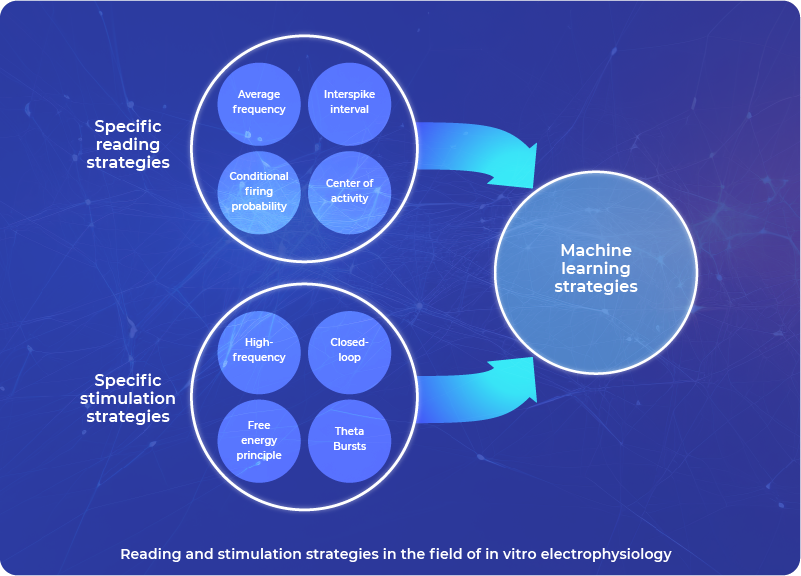
We are not aware of any similar attempts to solve the fascinating problem of neuroplasticity and hope that this will shed some new light on this topic.
Subscribe to stay tuned as we continue our quest for knowledge and push the boundaries of science.
